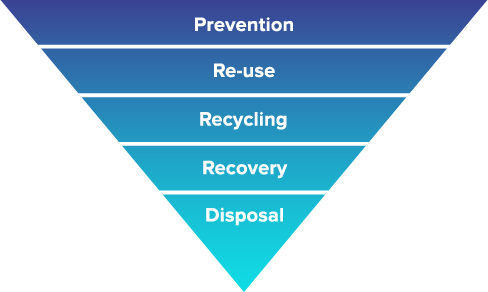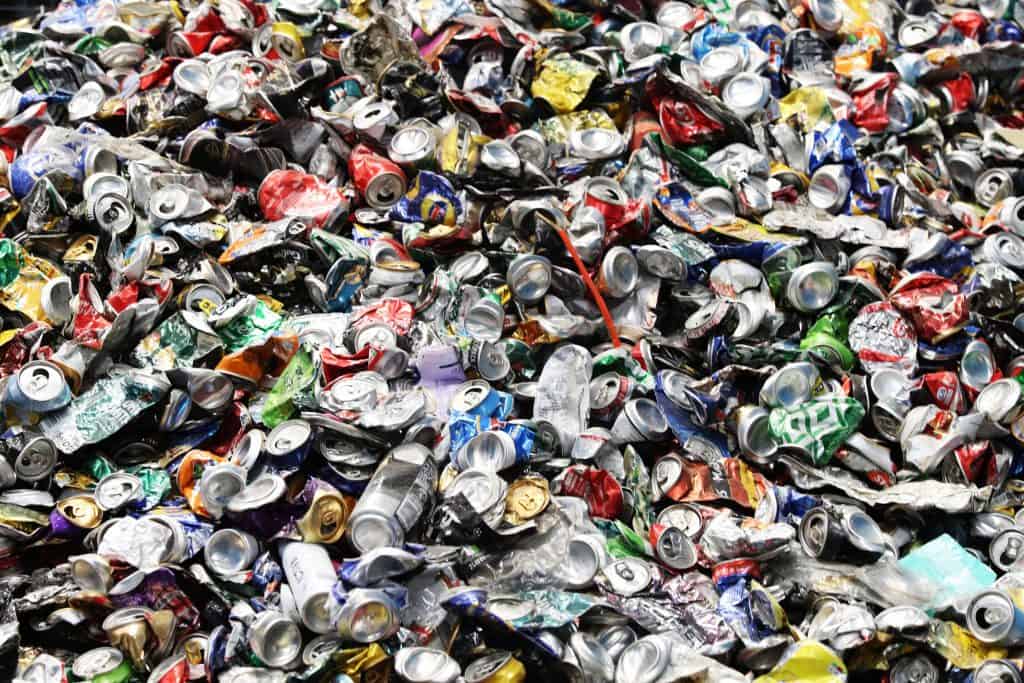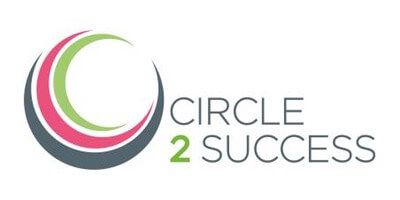Here at Printwaste, we’re proud to be a zero to landfill company, and to support most of our clients to be the same. What this means is that we ensure 100% of the waste that we collect is responsibly managed and diverted away from landfill. So, how do we do it?
Not only are we a zero to landfill business, but our priority is to manage all the waste, in as environmentally conscious way as possible. To do this, we use the standardised waste hierarchy:

What this hierarchy represents, is the most effective and sustainable methods for managing your waste. The wider the ‘layer’ on the hierarchy i.e., the nearer to the top, the better the process is for managing your waste sustainably. At Printwaste, as well as being zero to landfill, we also try to work all waste streams up the hierarchy as far as possible. Here’s how:
Prevention
The most sustainable method for managing your waste is not to produce any in the first place. We appreciate being zero waste will be a pipe dream for many, but that doesn’t mean you can’t make positive changes!
The first thing we do is to work out what waste we can eliminate from our supply chain. This might mean switching to a supplier, asking a supplier to change the way they package items, changing how we source products e.g., buying in bulk, changing the type of product that we use so that it produces less waste, or in many cases, eliminating something from the business altogether. A recent change for us for example is a switch to a traditional milk delivery; not only is it delivered by electric vehicle, but glass bottles can be endlessly returned, reused, and recycled, creating a circular solution.
Next, we look at how else we can eliminate waste within the business. For some, this might be going paperless. For others, it might be working out how to reduce overproduction of your products during manufacture. For our clients, a core part of zero to landfill happens in stage 1 of our client support process: the audit. Before we start working with a client, and again each year, we audit your business and your waste. This allows us to make recommendations, update processes, and help you and your team to make simple swaps that impact on your waste production. We also support with ongoing advice should you need it. For example, working with Gloucestershire Hospitals, a waste audit identified excessive food waste in the canteen, most commonly bread rolls. Switching from including bread rolls automatically with every meal, to offering it as an option, significantly cut excessive stock and overall food waste.
Ultimately, the less waste we produce, the less there is to process, and the better it is for the environment!

Reuse & Repurpose
If you absolutely have to produce the waste, then the next best thing is for it to be reused once you have finished with it. Sometimes, waste is unavoidably produced, but things which still have a life can be kept in circulation or repurposed into something new. We often receive office furniture and equipment from office moves or downsizing, most of which is still in exceptional condition. In these instances, we distribute items to other businesses to keep them in use, and have also reused some ourselves, supporting our zero to landfill.
Reusing does not always require an item to be used in its current form, and one of our unique tactics is to problem-solve and repurpose items that would otherwise be wasted. For example, during COVID-19, we repurposed old whiteboards and acrylic sheeting as screening within the office and warehouses; our reception table is an upcycled cable drum with reclaimed wood; and our team often innovate with items we have collected. Similarly, one of our clients produces teabags, which have unavoidable offcuts of teabag material due to the machine processing requirements. The paper cannot be reused, but it can be repurposed: we shred the offcuts into smaller pieces, which are then used as animal bedding by a local company.

Recycling & Composting
Many items can be recycled over and over again, and many materials can also be recycled into something new. For example, cans can be used to make new cans, but other waste metals can also be used to make cans too. As well as all the standard forms of recycling – cardboard, glass, plastic, and metals – we have also established a number of innovative recycling practices too.
Polystyrene is typically considered ‘non-recyclable’, particularly as it is extremely bulky to transport. We have pioneered a technique to compress the air out of polystyrene, making it infinitely more transportable, and return it to companies that manufacture polystyrene. They reinflate and reshape the polystyrene into new packaging, which ultimately means that less raw materials are used in polystyrene production. This process diverted 2.15 tonnes from landfill in 2020.
Similarly, we have also implemented techniques to maximise the amount and type of items that can be recycled. As well as combined machine and hand-sorting, we have also created stations to dismantle products into their component parts, ready for recycling. Working with Kohler Mira who manufacture plumbing consumables, for example, we have created a process for splitting up their faulty items into their component parts, such as stripping showerheads into plastics, metals and packaging. While the item cannot be recycled as a whole, every component part can be, and this is thus a more sustainable practice.
In 2020 recycling accounted for 25,768.15 tonnes and composting of 185.12 tonnes of the waste that we handled.

Recovery
If an item cannot be reused or recycled, then they can be processed for energy ‘recovery’ which is the process of producing energy and fuels from waste materials. This includes, but is not limited to anaerobic digestion, waste to energy via incineration, gasification, and pyrolysis.
For the Wasdell Group, whose services include the manufacture, packaging, storage and distribution of many vitamin supplements and health food products, there was a challenge with sustainable disposal. Their products must meet legislative food safety requirements and exacting quality control standards and those which fail cannot enter the supply chain. This creates a unique waste stream of organic materials that do not meet the standards for sale. The Printwaste solution is to apply product dismantling, dividing the items into packaging (for recycling) and product. The products are sent for anaerobic digestion, producing organic matter (compost) which can be used in horticultural settings, and biogas which is used to help produce electricity for the National Grid. So far, 30.42 tonnes of organic waste have been diverted from landfill and digested, generating 38.32 MWh of electricity for the grid (as at November 2021).
Finally, any items which cannot be reused, repurposed, or reprocessed into something new, can be incarnated or landfilled, or can be incinerated with the specific aim of generating energy for the National Grid. We opt for the latter, for the very small volume of items for which there is currently no alternative route.

Disposal
The final layer of the hierarchy is item disposal, which refers to either landfill, or incineration without energy recovery. At Printwaste, our priority policy is to avoid these options as standard.
If you would like to become zero to landfill, speak to our team on 01242 588 600.
Source: https://www.printwaste.co.uk/news/how-does-printwaste-achieve-zero-to-landfill/






